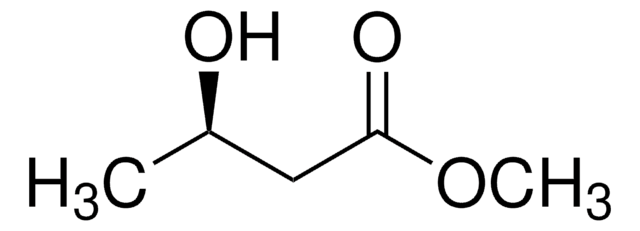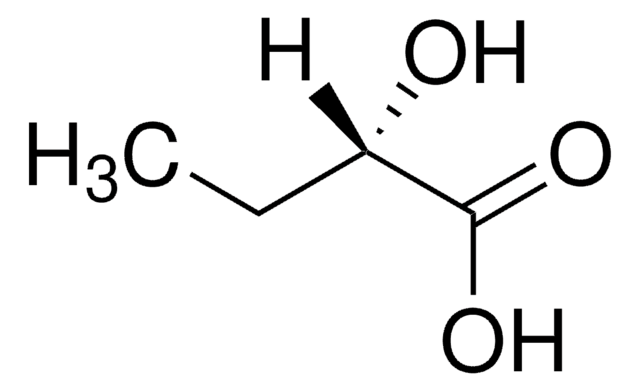Key Documents
166898
3-Hydroxybutyric acid
95%
Synonim(y):
(±)-3-Hydroxybutanoic acid, DL-β-Hydroxybutyric acid
About This Item
Polecane produkty
Poziom jakości
Próba
95%
współczynnik refrakcji
n20/D 1.443 (lit.)
tw
118-120 °C/2 mmHg (lit.)
rozpuszczalność
ethanol: soluble 50 mg/mL, clear
gęstość
1.126 g/mL at 25 °C (lit.)
grupa funkcyjna
carboxylic acid
temp. przechowywania
2-8°C
ciąg SMILES
CC(O)CC(O)=O
InChI
1S/C4H8O3/c1-3(5)2-4(6)7/h3,5H,2H2,1H3,(H,6,7)
Klucz InChI
WHBMMWSBFZVSSR-UHFFFAOYSA-N
Szukasz podobnych produktów? Odwiedź Przewodnik dotyczący porównywania produktów
Opis ogólny
Zastosowanie
Zastosowanie
Hasło ostrzegawcze
Danger
Zwroty wskazujące rodzaj zagrożenia
Zwroty wskazujące środki ostrożności
Klasyfikacja zagrożeń
Eye Dam. 1 - Skin Corr. 1B
Kod klasy składowania
8A - Combustible corrosive hazardous materials
Klasa zagrożenia wodnego (WGK)
WGK 3
Temperatura zapłonu (°F)
233.6 °F - closed cup
Temperatura zapłonu (°C)
112 °C - closed cup
Środki ochrony indywidualnej
Eyeshields, Gloves, type ABEK (EN14387) respirator filter
Wybierz jedną z najnowszych wersji:
Masz już ten produkt?
Dokumenty związane z niedawno zakupionymi produktami zostały zamieszczone w Bibliotece dokumentów.
Klienci oglądali również te produkty
Chromatograms
suitable for GCNasz zespół naukowców ma doświadczenie we wszystkich obszarach badań, w tym w naukach przyrodniczych, materiałoznawstwie, syntezie chemicznej, chromatografii, analityce i wielu innych dziedzinach.
Skontaktuj się z zespołem ds. pomocy technicznej
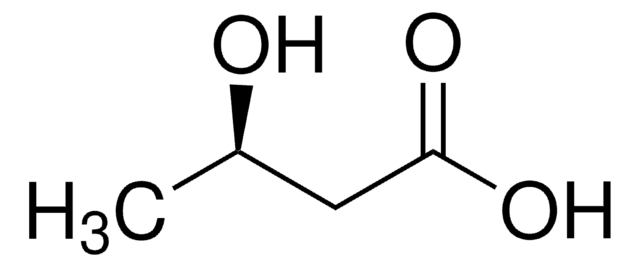

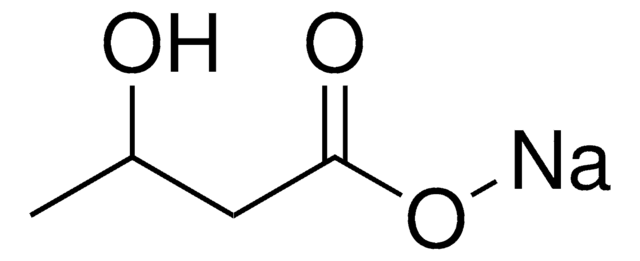


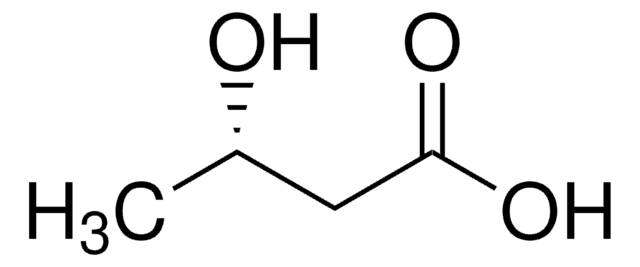
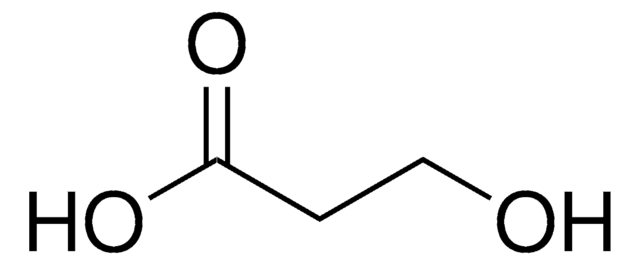



![Poly[(R)-3-hydroxybutyric acid] natural origin](/deepweb/assets/sigmaaldrich/product/structures/129/476/7d1c924b-f644-4889-a2d6-d7a923ce382c/640/7d1c924b-f644-4889-a2d6-d7a923ce382c.png)
